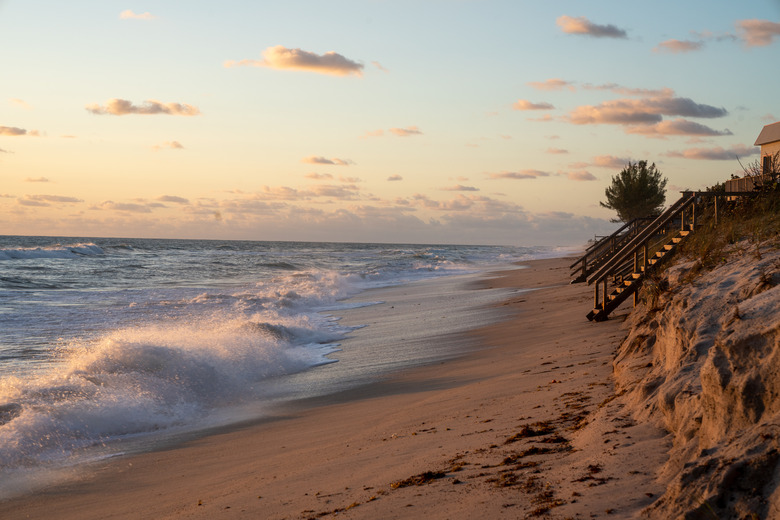Birds Of The Florida Panhandle
Florida's Panhandle region stretches across the northern area of the Sunshine State and offers forest, wetlands and marine habitats for birds. The warm temperatures of the region make the Panhandle a frequent summer nesting location for migratory bird species. Many birds native to the area never leave. Florida Panhandle wildlife refuges, such as the Emerald Coast Wildlife Refuge, offer protection for bird inhabitants.
Marine
Marine
The southern border of Florida's Panhandle region faces the Gulf of Mexico, while the eastern edge is on the Atlantic Ocean. These bodies of water host marine-dwelling birds whose diets consist of saltwater fish and vegetation. Some that dwell in the Florida panhandle include the double-breasted cormorant, eastern brown pelican and the anhinga. These birds form nests on the water's shoreline. The Gulf and Atlantic coasts are also homes to shorebirds, who live on the shores but do not fly over the ocean for food. These birds nest on the shorelines, much like marine birds. Florida's roster of shoreline birds features the red knot, American oystercatcher and dunlin.
Birds of Prey
Birds of Prey
Among the Panhandle's bird-of-prey species are the osprey, swallow-tailed kite, red-shouldered hawk and bald eagle. Florida has one of the highest populations of bald eagles in the continental United States. In the Panhandle, many birds of prey live in the region's forested areas. Treetops are popular nesting sites for birds of prey. Some of these birds, such as the osprey and swallow-tailed kite, prefer to live near freshwater aquatic areas because fish and amphibians are important parts of their diet. The Panhandle is also home to two scavenger species, turkey vulture and black vulture. These birds only eat the carcasses of dead animals.
Wetlands
Wetlands
Many Panhandle birds require freshwater wetland habitats for survival. Marshes, swamps, lakes and rivers are examples of freshwater wetland environments. Wetland birds construct nests on the edges of lakes and rivers, using clumps of mud and grass as building material. The majority of Panhandle wetland birds are waterfowl, such as ducks – wood duck, mottle duck and black-bellied whistling duck – northern pintail and blue-winged teal. One waterfowl species, the muscovy duck, is not native to Florida. Florida's wetland birds also include larger species, including the great blue heron, snowy egret, American bittern and white ibis.
Arboreal
Arboreal
Arboreal birds nest on tree branches and seldom come to the ground for foraging purposes. Many of these birds are also known as songbirds, since their chirps sound melodious. The Panhandle's arboreal birds are the American robin, northern cardinal, red-winged blackbird, boast-tailed grackle, blue jay and pine warbler. Florida's state bird, the mockingbird, is an arboreal songbird. The region is also home to woodpecker species — arboreal birds that build nests in tree cavities. Some of the region's woodpecker species are the red-cockaded, downy, red-bellied and pileated. The red-cockaded woodpecker is an endangered species protected by the U.S. Endangered Species Act.
Cite This Article
MLA
Davis, Skip. "Birds Of The Florida Panhandle" sciencing.com, https://www.sciencing.com/birds-florida-panhandle-8599270/. 22 November 2019.
APA
Davis, Skip. (2019, November 22). Birds Of The Florida Panhandle. sciencing.com. Retrieved from https://www.sciencing.com/birds-florida-panhandle-8599270/
Chicago
Davis, Skip. Birds Of The Florida Panhandle last modified March 24, 2022. https://www.sciencing.com/birds-florida-panhandle-8599270/
